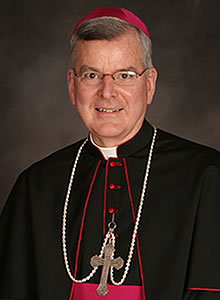
While watching the evening news on the second Sunday of July, I was intrigued to hear that one of the local Detroit evangelical churches had declared their weekly gathering to be “Porn Sunday.”
The young 30-something pastor explained in an interview that he had been formerly hooked on pornography and now wanted to help others in like situations by calling attention to this grave evil and the harm it can do to individuals, marriages and families.
I was impressed by the pastor’s reasoning and thought I would do a little research on the subject.
Big business
Would you believe that the pornography industry brings in $57 billion per year, $12 billion of which is made in the United States alone? Porn revenue exceeds the combined revenues of ABC, CBS and NBC ($6.2 billion) and is larger than all combined revenues of professional football, baseball and basketball franchises.
Current estimates are that $20 billion is spent annually on “adult” videos, $2.5 billion on cable pay-for-view, $2.5 billion on the Internet, $4.5 billion on phone sex and $7.5 billion on magazines.
In 2004, there were 4.2 million pornographic websites on the Internet, with 372 million pornographic pages in all. Daily there were 68 million pornographic search engine requests (25 percent of all requests!). The U.S. Customs Service estimates that there are 100,000 websites offering illegal child pornography.
Seventy percent of 18-to-24-year-old men visit pornographic sites on a monthly basis. Sixty percent of men in their 20s and 30s also report regular use. One out of every three visitors to pornographic websites are women, though they tend to favor chat rooms two times more than men.
Psychologists report that men are more susceptible to becoming addicted to pornography since they respond more strongly to visual stimulation than women. A man’s brain is distinct and can fixate on sexual stimuli, creating neural pathways that are worn into the brain over time, becoming a constellation of images, chemical reactions, thoughts, feelings and sensations that eventually overwhelm the frontal lobe controls. Soon the viewer is addicted.
Like other addictions, it takes more and more stimuli to achieve the desired effect. As this continues, the person may be tempted to act out, at first in simply reckless ways, though eventually even in a criminal manner.
Breaking the cycle
The first step in breaking this addictive pattern is to bring the problem out in the open and admit to not having control over this behavior. Here the sacrament of reconciliation/penance can be of great assistance. The priest is there to offer hope, healing and, above all, forgiveness.
The second step is to avoid the very circumstances that will lead to further temptation. The avoidance of the occasion of sin is of paramount importance in the struggle with the passions.
Further, having a professional counselor or a close friend to help monitor one’s behavior can be of great benefit.
Being a better steward of one’s time is likewise essential. Many fall prey to temptation because they are bored and have too much time on their hands. A regular prayer life and frequent participation in the Mass are also powerful sources for fighting temptation.
Finally, a daily examination of conscience along with a renewed expression of our sorrow for past sins provides an attitude of determination to fight against the lure of the Evil One.
Parents should be particularly vigilant in monitoring the activities of their children. Eleven years old is the average age of first Internet exposure to pornography. This can be accessed on the computer, an iPod or even a cell phone.
But parents should also be proactive by teaching their children about the beauty of our God-given sexuality and the truth about social morality upon which they will want to base their lives. Parents also ought to encourage them in the habit of reading good and wholesome literature.
In Detroit, there is one evangelical pastor who has overcome an addiction to pornography and is now willing to share the new hope that he had found by helping others who were likewise afflicted. His is a powerful witness.
I hope we find that same kind of witness here in St. Paul and Minneapolis. God bless you!



